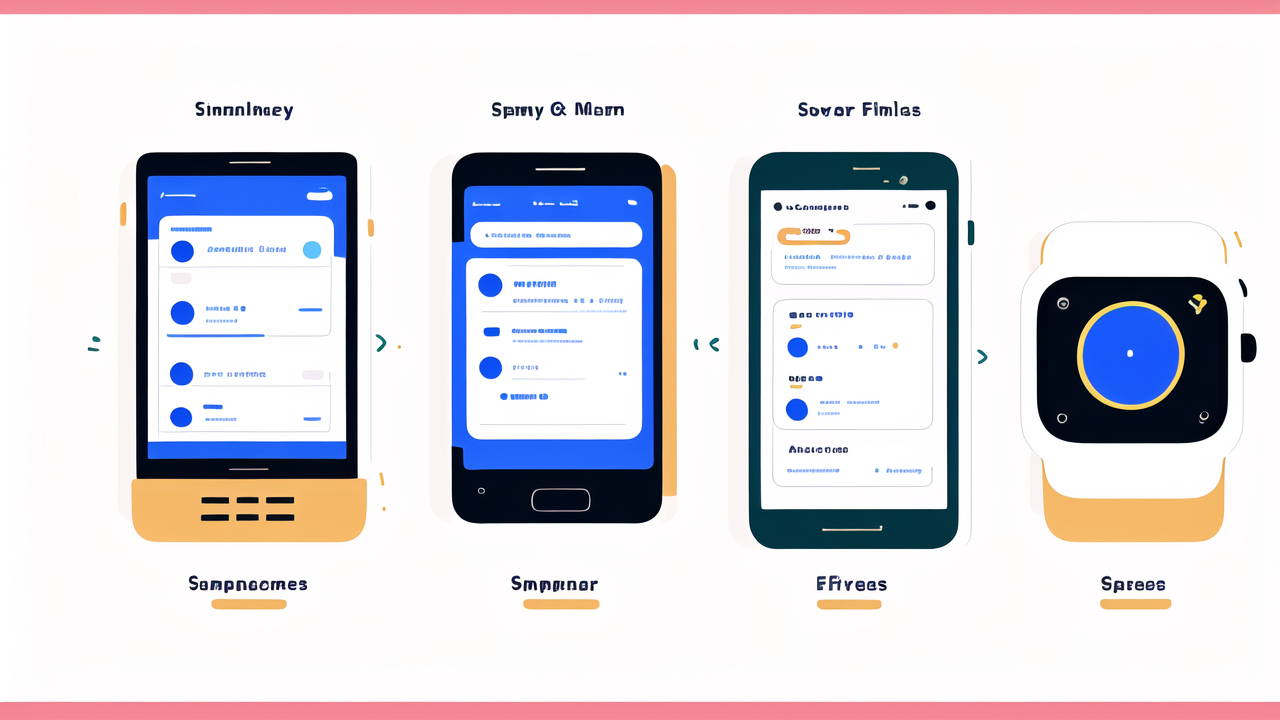Understanding the Smart Watch Market Dynamics
The Rise of Smart Watches in the United States
Smart watches have become increasingly popular in the US. Their adoption rate has grown rapidly over the past few years. Many consumers now see them as essential devices. They offer convenience and functionality in a compact form.

Smart watches integrate seamlessly with smartphones. This makes them attractive to tech-savvy users. They provide quick access to notifications, messages, and apps. Fitness enthusiasts appreciate their health tracking features.
The market has seen fierce competition among major tech companies. Apple, Samsung, and Fitbit are key players. Each brand offers unique features to attract customers. This competition has driven innovation and improved product quality.
Market Segmentation: What Drives Consumer Choices?
Consumer preferences in smart watches vary widely. Some prioritize fitness tracking. Others value style and customization. Many seek advanced health monitoring features.
Price is a significant factor in consumer decisions. High-end models offer more features but at a premium. Budget-friendly options cater to cost-conscious buyers.
Brand loyalty plays a role in smart watch choices. Apple users often prefer Apple Watches. Android users may lean towards Samsung or other compatible brands.
Feature sets influence purchasing decisions. Some consumers want simple devices for notifications. Others seek comprehensive health tracking and smart home control.
The Role of Ecosystems in Smart Watch Adoption
Ecosystems play a crucial role in smart watch adoption. Apple's ecosystem is a prime example. It seamlessly integrates watches with iPhones, Macs, and other Apple devices.
Google's Wear OS creates a similar ecosystem for Android users. It allows for easy integration with various Android phones. This flexibility appeals to many consumers.
Ecosystems extend beyond just devices. They include apps, services, and third-party integrations. A robust ecosystem can significantly enhance a smart watch's functionality.
Interoperability within ecosystems is a key selling point. It allows for seamless data syncing and feature sharing. This creates a more cohesive user experience across devices.
Key Innovative Features of Top-Selling Smart Watches
Advanced Health Monitoring Capabilities
Modern smart watches offer impressive health monitoring features. They go beyond basic step counting and heart rate tracking.

Many devices now include ECG (electrocardiogram) capabilities. This feature can detect irregular heart rhythms. It provides valuable data for users with heart concerns.
Blood oxygen level monitoring is another advanced feature. It's particularly relevant in the context of respiratory health. Some watches can track sleep patterns and quality.
Stress monitoring through heart rate variability is gaining popularity. It helps users manage their mental well-being. Some watches offer guided breathing exercises for stress relief.
Integrated Payments and Wearable Technology
Smart watches are becoming powerful tools for contactless payments. Many support NFC technology for easy transactions. Users can pay for goods with a simple tap of their wrist.
This feature is especially convenient when exercising or running errands. It eliminates the need to carry a wallet or phone. Security measures like biometric authentication ensure safe transactions.
Some watches offer digital wallet capabilities. Users can store credit card information securely on their device. This makes managing multiple payment methods easier.
Public transport systems in some cities now accept smart watch payments. This adds another layer of convenience for daily commuters.
Enhanced Lifestyle and Fitness Functionalities
Fitness tracking remains a core feature of smart watches. Many now offer advanced metrics for various activities. These include swimming, cycling, and strength training.
GPS functionality in watches has improved significantly. It allows for accurate route tracking during outdoor activities. Some watches can suggest running routes based on user preferences.
Smart watches are becoming more autonomous in terms of fitness tracking. Many can automatically detect and log different types of exercises. This reduces the need for manual input.
Some watches now offer personalized coaching features. They can suggest workout plans based on user goals and performance. This brings a personal trainer-like experience to the wrist.
The Future of Smart Watches: Predictions and Potential
The Impact of Artificial Intelligence and Machine Learning
AI and ML are set to revolutionize smart watch capabilities. These technologies will enable more personalized experiences. Watches may predict user needs based on patterns and habits.

Health monitoring could become more proactive. AI might detect potential health issues before symptoms appear. This could lead to earlier interventions and better health outcomes.
Machine learning could enhance fitness tracking accuracy. It might provide more precise calorie burn estimates and workout suggestions. AI could offer personalized lifestyle recommendations based on health data.
Voice assistants on smart watches may become more sophisticated. They could handle complex tasks and provide more natural interactions.
Interoperability and the Evolving Smart Device Ecosystem
Future smart watches may offer greater interoperability with other devices. They could become central hubs for controlling smart home ecosystems. This would allow users to manage lights, thermostats, and more from their wrists.
Cross-platform compatibility might improve. This could reduce the ecosystem lock-in effect. Users might freely choose watches regardless of their smartphone brand.
Integration with augmented reality (AR) technologies is a possibility. Smart watches could serve as controllers for AR experiences. This could open up new applications in gaming and productivity.
Enhanced connectivity, like 5G support, could make watches more independent. They might function as standalone devices without relying on smartphones.
Privacy and Ethical Considerations in Smart Watch Technologies
As smart watches collect more personal data, privacy concerns grow. Manufacturers will need to prioritize data security and transparency. Clear policies on data usage and storage will be crucial.
Ethical considerations around health data will become more prominent. Questions about who can access this data and how it's used will arise. Regulations may need to evolve to protect consumer rights.
The potential for workplace monitoring through smart watches raises concerns. Clear guidelines on employer access to employee health data will be necessary. Balancing productivity tracking with privacy rights will be challenging.
As AI becomes more prevalent, ethical AI practices will be essential. Ensuring unbiased algorithms in health recommendations will be critical. Transparency in how AI makes decisions will be important for user trust.




Leave a comment
This site is protected by hCaptcha and the hCaptcha Privacy Policy and Terms of Service apply.